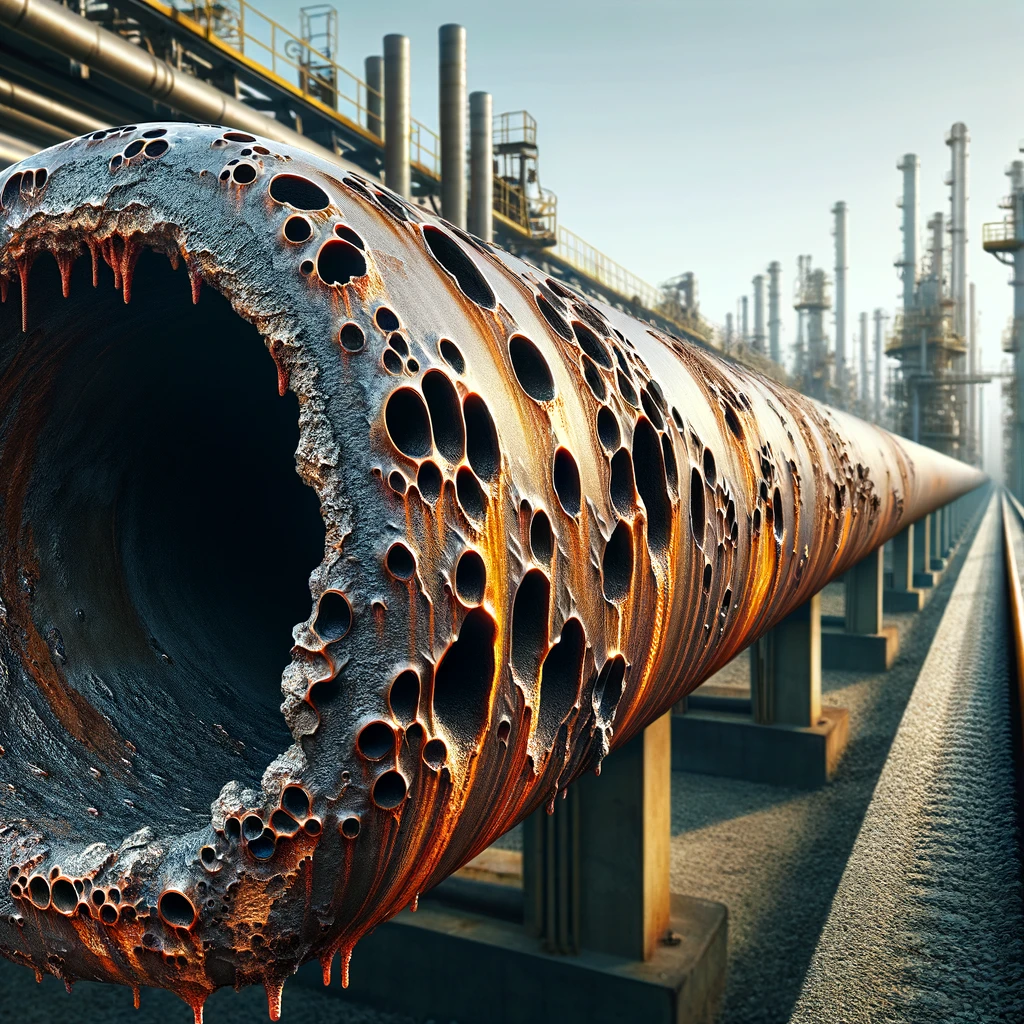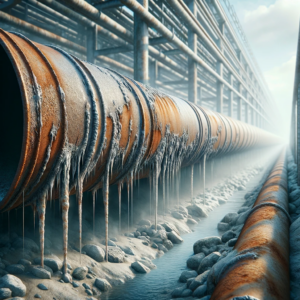
In the intricate web of industries powering our modern world, pipelines serve as crucial arteries, transporting essential resources—oil, gas, water, and chemicals—across vast distances. Their seamless operation underpins not only the energy sector but also municipal utilities and manufacturing processes. However, these metallic lifelines face a relentless adversary: corrosion. G3Soilworks introduces this blog to delve into the intricacies of corrosion, its profound impact on pipelines, and the multifaceted strategies employed to combat this pervasive challenge. Understanding corrosion pipeline management is crucial for ensuring the safety, reliability, and longevity of pipeline infrastructure.
At the heart of pipeline integrity and maintenance issues lies corrosion—a complex, destructive process that gradually undermines the materials that make up our critical infrastructure, primarily metals. This degradation is the result of chemical interactions between the material and its environment, leading to a range of detrimental effects.
Uniform corrosion, characterized by an even, consistent surface wear, is perhaps the most visually recognizable form of corrosion. This type of corrosion spreads across the surface of the metal, thinning it at a predictable rate. Although it is the simplest form to predict and manage, its insidious nature means that if left unchecked, it can significantly reduce a pipeline’s wall thickness, compromising its ability to withstand internal pressures and leading to leaks or catastrophic failures. Uniform corrosion is a clear indicator of the need for comprehensive corrosion protection strategies, such as protective coatings and cathodic protection systems, to safeguard the pipeline’s longevity.
Pitting corrosion is more treacherous and damaging than its uniform counterpart. This form of corrosion attacks the metal surface in localized spots, creating deep, narrow pits that are difficult to detect and predict. The danger of pitting corrosion lies in its ability to penetrate the metal deeply with minimal surface evidence, potentially leading to punctures. These pits can become initiation points for cracks, significantly weakening the pipeline and increasing the risk of leaks or ruptures. Pitting corrosion underscores the critical need for regular, detailed pipeline corrosion inspection using advanced techniques such as ultrasonic testing to detect and address these hidden threats before they escalate.
Crevice corrosion occurs in metal surfaces that are in close contact with each other or with another material, creating shielded areas where corrosive agents, such as water or chemicals, can accumulate. These micro-environments allow for corrosive processes to occur unchecked, leading to aggressive localized corrosion. Common sites for crevice corrosion include gaskets, flanges, and bolted connections. This form of corrosion can cause significant damage if not identified and mitigated early, highlighting the importance of design considerations and regular inspection to prevent areas where crevice corrosion can thrive.
Galvanic corrosion arises when two dissimilar metals come into electrical contact in the presence of an electrolyte, such as water. This setup creates a galvanic cell where the more active metal (anode) corrodes at an accelerated rate while the more noble metal (cathode) is protected. This type of corrosion is particularly insidious in pipeline systems that incorporate different materials or where metal pipelines come into contact with other buried structures. Preventing galvanic corrosion involves careful material selection, isolation techniques such as insulating joints, and the use of cathodic protection to control the electrochemical reactions involved.

The rate and severity of corrosion in pipelines are significantly influenced by a myriad of factors. Environmental conditions such as humidity, temperature, and soil composition can accelerate corrosion processes, making certain geographical areas more prone to pipeline degradation. Similarly, the chemical properties of the substance being transported—whether it is acidic, basic, or contains corrosive agents—can directly impact the internal corrosion rates of pipelines. Moreover, the material composition of the pipeline itself determines its resilience or susceptibility to various forms of corrosion. These factors combined underscore the critical importance of comprehensive pipeline corrosion inspection and monitoring programs. By understanding and mitigating the unique risks posed by the environment and the materials involved, pipeline operators can significantly enhance the integrity and longevity of their infrastructure.
The consequences of unchecked corrosion are manifold, threatening not just the physical integrity of pipelines but also the safety of communities and ecosystems. Corroded pipelines are prone to leaks and ruptures, leading to hazardous spills and potentially catastrophic accidents. Moreover, the economic toll of corrosion encompasses not only the direct costs of repairs and replacements but also indirect losses related to operational downtime, environmental remediation, and legal liabilities. This highlights the critical nature of pipeline corrosion control in safeguarding assets and the environment.
Identifying and assessing corrosion’s presence and extent is critical for maintaining pipeline integrity. Techniques range from basic visual inspections to sophisticated non-destructive testing methods, such as ultrasonic testing and magnetic flux leakage. Inline inspection tools, known as “smart pigs,” traverse the pipeline, gathering crucial data on wall thickness and defect presence. Regular monitoring, coupled with advanced technologies, enables early detection of corrosion, facilitating timely interventions. Pipeline corrosion inspection methods play a pivotal role in detecting and addressing potential issues before they escalate.
Mitigating the risk of corrosion involves a blend of engineering, materials science, and maintenance practices. Protective coatings and linings act as barriers, shielding the pipeline from corrosive elements, while cathodic protection systems mitigate the electrochemical reactions that drive corrosion. Selecting corrosion-resistant materials and designing for durability are foundational considerations in pipeline construction. Furthermore, regular maintenance practices, such as cleaning and the application of corrosion inhibitors, play a pivotal role in preventing corrosion. These efforts are essential for effective pipeline corrosion prevention and ensuring the longevity of the infrastructure.
The management of pipeline corrosion is governed by a complex landscape of regulations, standards, and guidelines at both national and international levels. Compliance with these regulatory requirements is not just a legal obligation but a moral imperative to ensure the safety and well-being of communities and the environment. These frameworks encompass everything from design and construction standards to operation and maintenance protocols, underscoring the industry’s commitment to safeguarding pipeline integrity through rigorous pipeline corrosion control measures.
The battle against corrosion is ever-evolving, driven by technological advancements and innovative materials. Emerging trends, such as predictive modeling and data analytics, offer promise for proactive maintenance strategies, enabling the prediction of corrosion before it becomes a critical issue. Advances in materials science, including the development of new alloys and composite materials, are expanding the toolkit for corrosion resistance.

In conclusion, the fight against corrosion is a continuous endeavor critical to the safety, efficiency, and reliability of pipeline operations. The stakes are high, with the well-being of our communities, environment, and economy in the balance. It is imperative for industry stakeholders, including companies like G3Soilworks, to remain vigilant, investing in research, embracing innovative technologies, and adhering to regulatory standards. Through concerted efforts and proactive management, we can mitigate the impacts of corrosion and ensure the integrity of our vital pipeline infrastructure for generations to come, emphasizing the importance of corrosion prevention technologies. Call us at +1 714-668-5600 for more information on corrosion pipeline management techniques.
Q1: What are the latest innovations in corrosion monitoring technology?
A: Recent innovations in corrosion monitoring technology include wireless corrosion sensors, which offer real-time data on corrosion rates without the need for direct physical access. Another advancement is the development of smart coatings that can change color in response to corrosion, providing a visual indicator of the corrosion status. Additionally, drone technology is being utilized for remote inspection of pipelines in challenging or hazardous locations, enhancing safety and efficiency in corrosion monitoring.
Q2: How is data analytics transforming pipeline corrosion prevention?
A: Data analytics is revolutionizing pipeline corrosion prevention by enabling the analysis of vast amounts of data from corrosion monitoring devices, environmental sensors, and historical maintenance records. Machine learning algorithms can predict corrosion hotspots and future corrosion risks with high accuracy, allowing for targeted maintenance and preemptive repairs. This predictive approach optimizes resource allocation and significantly reduces the likelihood of corrosion-related incidents.
Q3: Are there any environmental initiatives that help reduce the risk of pipeline corrosion?
A: Yes, several environmental initiatives aim to mitigate pipeline corrosion risks. For instance, efforts to reduce air pollution have a direct impact on atmospheric corrosion rates by lowering the concentration of corrosive agents in the environment. Wetland restoration and soil stabilization projects can also decrease soil corrosivity by improving drainage and reducing soil acidity. Additionally, promoting the use of biodegradable corrosion inhibitors is another environmental initiative that not only combats corrosion but also minimizes the ecological footprint of pipeline maintenance activities.
Follow, engage, learn. Stop by our blog to see what’s happening at G3SoilWorks.
G3Soilworks – a full service geotechnical/ engineering geologic consulting firm serving clients since 2009 and delivering expert solutions with our highly experienced team and specialized consultants.
G3SoilWorks
350 Fischer Avenue Costa Mesa, CA 92626
Tel. 714.668.5600
E. info@g3soilworks.com